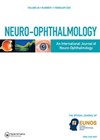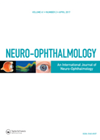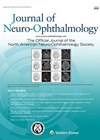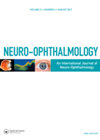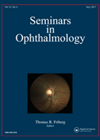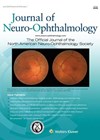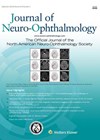
Journal Reviews
Narrative review of idiopathic intracranial hypertension in children / adolescents
Idiopathic intracranial hypertension (IIH) affects both children and adults. Whilst the majority of IIH is mainly seen amongst adults, it also affects children. There are currently no clinical trials in IIH for those who are adolescents or children. The aims...
Agreeing terminology for non-classic visual field abnormalities
The authors present a prospective survey of neuro-ophthalmologists. The survey comprised of 10 visual fields. The selection of visual fields for the survey aimed for variety and excluded classic neuro-ophthalmology visual field defects, e.g. hemianopia, nasal step. The survey was...
Rare presentation of giant cell arteritis in Chinese subjects
Only a few case reports of biopsy-proven GCA (BpGCA)-associated vision loss in Chinese subjects have been published. This paper presents three elderly Chinese subjects with BpGCA who presented with vision loss. A search of the literature was also conducted to...
Single case report of horizontal gaze paresis due to medial pontine haemorrhage
The authors report a single case (80-year-old female) of bilateral horizontal conjugate gaze palsy due to a dorsal median pontine haemorrhage. The patient presented with skew deviation, bilateral horizontal conjugate gaze palsy, vertical gaze palsy, ipsilateral lower motor neuron facial...
Predicting ischemic lesion location using perimetry
The authors present a retrospective records review, using the search terms homonymous hemianopia, visual field loss and MRI. Only posterior circulation artery territory ischemic strokes were included. Demographics, stroke details and initial and follow-up with 24-2 SITA Standard perimetry results...
Exploring the potential of neurodegenerative disease screening within age-related eye disease research
The authors recruited healthy controls aged between 60 and 75-years-old, previously enrolled into a registry as patients following cataract surgery without age-related macular degeneration (AMD). Exclusion criteria included dense cataract, retinal disease, ocular inflammatory disease, moderate glaucoma, optic neuropathy, cancer,...
Use of international interocular difference thresholds for optic neuritis diagnosis in clinical practice
Multiple sclerosis (MS) is the most common non-traumatic cause of disability in young people, and visual symptoms can be the initial manifestation in up to 20% of cases. Retinal examination can be helpful in making the correct diagnosis. The latest...
Malpractice from telephone triage in ophthalmology
The authors examined malpractice lawsuits related to ophthalmology telemedicine telephone triage in the US. The study reviewed a total of 510 lawsuits and identified 18 cases that involved synchronous telephone visits, while none involved video telecommunication. The study found that...
Narrative review of opsoclonus myoclonus ataxia syndrome following COVID-19
Opsoclonus myoclonus syndrome (OMS) / opsoclonus myoclonus ataxia syndrome (OMAS) is a rare central nervous system manifestation of COVID-19, but an increasing number of articles have reported patients in whom COVID-19 was complicated by OMS / OMAS. This narrative review...
Could internuclear ophthalmoplegia aid differential diagnosis in demyelinating conditions?
The authors present a retrospective review of individuals diagnosed with either neuromyelitis optica spectrum disorder (NMOSD) or multiple sclerosis (MS). The aim of the study was to assess the prevalence of internuclear ophthalmoplegia (INO) in both groups over a 10-year...
Are illness perception or personality factors associated with follow-up appointment attendance in neuro-ophthalmology?
This was a prospective study which surveyed adults with appointments in either neuro-ophthalmology or the glaucoma service at a tertiary clinic. The aim of the study was to identify factors linked to attendance of follow-up appointments. Recruitment occurred over a...
Causes of photophobia in adults and children
This retrospective case review identified individuals of any age with visual discomfort using billing records over an eight-year period. These records were screened for photophobia / light sensitivity as a main symptom or documented during examination. Data including demographics, medical...

